Samsung Galaxy S24
The smallest phone in Samsung’s S-series is always a favourite for those who prefer a more petite handset. This year, the S24 is looking to retain that popularity by bringing Galaxy AI smarts and a new chipset to a familiar chassis. The S24 looks almost identical to its predecessor, with the only obvious external changes being a new matte finish on the rear and some different colours to choose from. The screen bezels have shrunk slightly, which is nice to see, but you’d be hard-pressed to tell the models apart at a glance.
With no hardware upgrades to the camera system, either, it may seem like the S24 is just offering more of the same. However, the software does a lot to make this phone feel fresh. I wanted to know if it’s worth choosing the newer model, and after living with it as my main handset for over a week, here’s what I found out.
DESIGN
As I mentioned, there are a lot of similarities between Samsung’s Galaxy S24 and S23, which itself was similar to the S22. In other words, if you’ve used a recent model, you won’t be in for too many surprises.
The most noticeable change is that the rear panel has a satin-like matte finish. It’s much more fingerprint-resistant than the glossy rear panel, and I’m a big fan of this change. It’s also a grippy phone, unlike some other velvety-feeling matte devices, so if you’re brave enough, you could use it without a case. The aluminium edges are now completely flat, giving the device a bit of an iPhone vibe, whereas the edges of the S23 have a subtle curve to them.
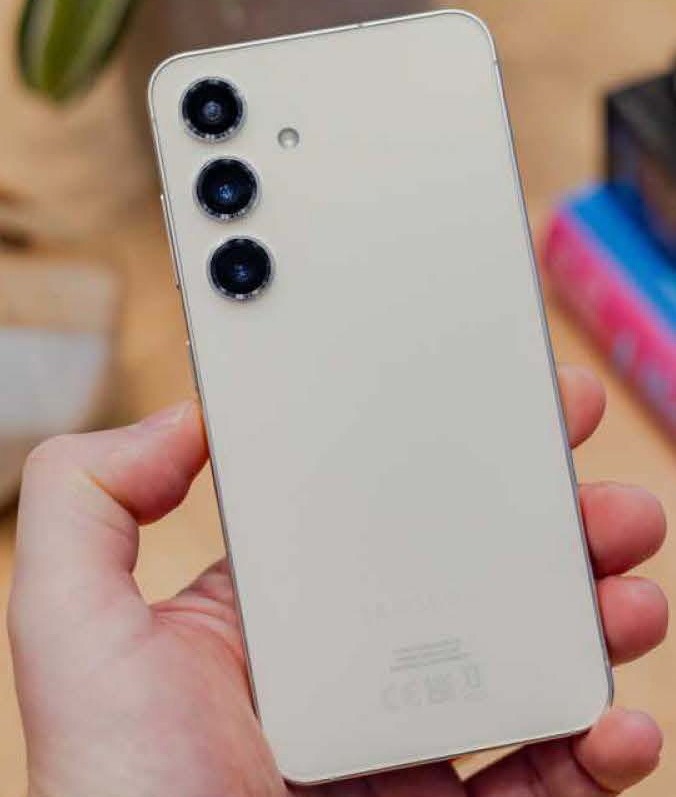
Despite the harder edges, it’s very comfortable to hold, with much gentler curves compared to the sharp corners of the S24 Ultra. The edges also have a matte finish, and just like the rear panel, they’re less prone to smudges. I love to see it.
This aluminium frame is supposedly 17 percent more durable than the frame of its predecessor, but it’s not quite as fancy as the titanium frame that you’ll find on the
S24 Ultra. To be completely honest, though, I’ve never had any concerns about the strength of the frame – it’s the glass that’s far more likely to get damaged in a drop.
As someone who tests a lot of super-sized flagship phones, switching to the Galaxy S24 was a treat. It’s so slim and small that you barely notice it in your pocket, and the fact that it has flagship-grade specifications means there are very few compromises when opting for the more compact model.
The haptic motors in this phone are also among the best I’ve tried. There’s a genuine mechanical-feeling clunk when you toggle a settings slider, while subtle vibrations mean typing feels excellent.
Just like previous generations, the Galaxy S24 has an IP68 rating for dust and water resistance. This means it’s effectively dust and waterproof, so if you’re the adventurous type, you can rest assured your phone is well protected from the elements.
DISPLAY
The Galaxy S24 has a 6.2-inch completely flat display with slightly slimmer bezels and a slightly smaller camera cut-out than its predecessor allowing for an extra 0.1-inch of screen within the same size body.
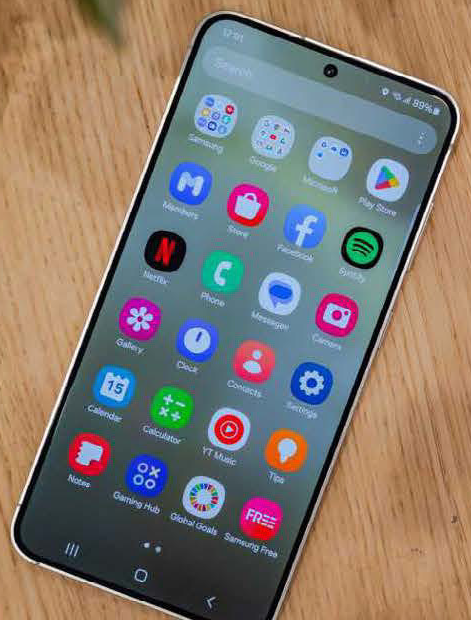
While it does feel slightly bigger, the two displays aren’t worlds apart. The S24’s screen is big enough to be enjoyable for content consumption, but it can feel a tad cramped for gaming.
The biggest upgrade to the display is that it’s now an LTPO panel, which means it can dynamically switch from as little as 1Hz all the way to a 120Hz refresh rate. Effectively, this means that content looks smooth and fluid while scrolling or playing a game, but you’ll still get great battery life, as the panel will lower its refresh rate when a static image is displayed.
The S24 gets a lower resolution panel than its other S-series siblings: this one is only FHD+, whereas the S24+ and Ultra have a QHD+ display.
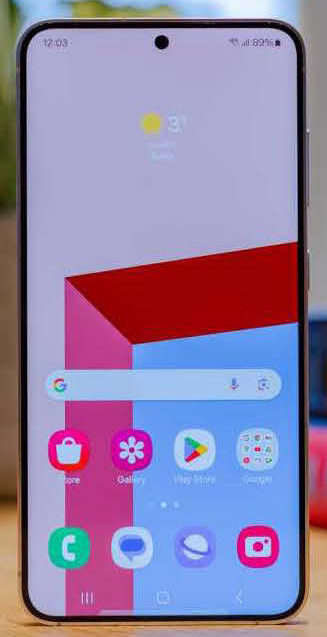
In reality, though, you’ll barely notice it. The S24’s display always looks sharp, and the pixel density looks great on a display of this size. What I would really have liked to see, though, is the lovely anti-glare coating of the Ultra display – maybe that’ll trickle down to the smaller phones next year.
The display brightness has increased significantly on the S24, and it’s now able to output up to 2,600 nits in certain scenarios according to Samsung. It certainly had no trouble competing with the early spring sunshine, and it makes HDR content look superb via apps such as Netflix and Prime Video.
Samsung’s One UI software gives you some basic control over the colour of the display, but it’s not as comprehensive as some competitors. You get a Natural and a Vivid profile to choose between and you can tweak the warmth of the Vivid mode.
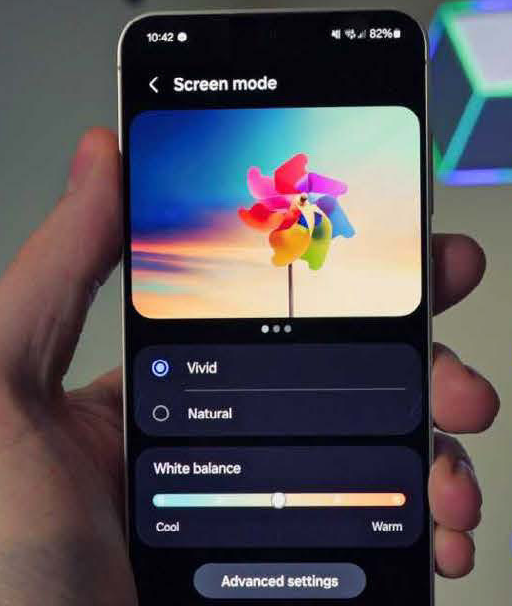
There’s also an advanced tab that lets you dive further into white balance adjustment. However, I never felt the need to change anything, as it looks fantastic by default.
Elsewhere, the Galaxy S24 has dual stereo speakers, and despite being crammed into a smaller shell, they sound quite good.
There’s more bass response than you’ll hear on some competing phones, but it could still use a little more grunt, meanwhile, the mids and highs are very detailed and sound pleasant. Of course, they’re no match for earbuds or a Bluetooth speaker, but they’re good enough to use around the home.
PERFORMANCE
The Galaxy S24 and S24+ feature a Samsung Exynos 2400 processor in most of the world (including the UK), though the US and a handful of other markets get the Qualcomm Snapdragon 8 Gen 3 instead.
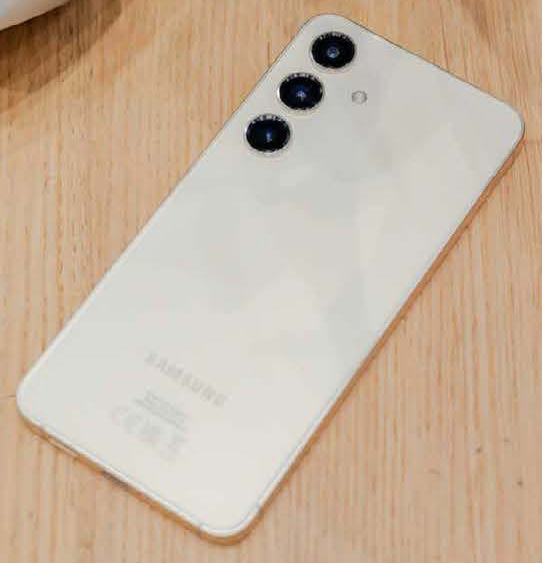
I’ve been testing the Exynos variant, in its base configuration with 8GB of RAM and 128GB of storage.
The Exynos 2400 is slightly less capable than the Snapdragon 8 Gen 3, something which can be seen in the GFXBench scores in the chart at the bottom of the page.
However, the margin is smaller than you might expect. In day-to-day performance, you probably won’t be able to tell the difference, and I could still max out the graphical settings and play Genshin Impact at 60fps on this phone. It does get pretty hot in the process, though, so the larger models will be a better choice for keen gamers.
Aside from getting a bit toasty, I have no complaints about the performance. The Galaxy S24 always feels fast and responsive – it’s a delight to use.
What’s a little harder to deal with, though, is the storage capacity. 128GB feels very stingy in 2024, especially when mid-rangers at half the price can now be found with 256GB as a base spec. If you want more storage, 256GB is the maximum capacity for this model, and you’ll need to jump to the S24+ to get 512GB, or the Ultra if you want 1TB. It’s a bit of a shame, really; just because you prefer a smaller phone, it doesn’t mean you don’t want top-tier specs.
Geekbench 6 (multi-core)
Samsung Galaxy S24: 6,251
Samsung Galaxy S24+: 6,945
Samsung Galaxy S24 Ultra: 7,141
Google Pixel 8: 2,842
OnePlus 12: 4,819
Xiaomi 14: 6,611
GFX Manhattan 3.1
Samsung Galaxy S24: 119fps
Samsung Galaxy S24+: 119fps
Samsung Galaxy S24 Ultra: 120fps
Google Pixel 8: 99fps
OnePlus 12: 60fps
Xiaomi 14: 121fps
Battery life
Samsung Galaxy S24: 11 hours, 26 minutes
Samsung Galaxy S24+: 16 hours, 4 minutes
Samsung Galaxy S24 Ultra: 14 hours, 14 minutes
Google Pixel 8: 10 hours, 49 minutes
Xiaomi 14: 12 hours, 46 minutes
Charge in 15 minutes
Samsung Galaxy S24: 29%
Samsung Galaxy S24+: 16%
Samsung Galaxy S24 Ultra: 30
Google Pixel 8: 23%
OnePlus 12: 67%
Xiaomi 14: 43%
PHOTOGRAPHY
The camera hardware on the Galaxy S24 is unchanged from the S23, but there are some differences in photo and video performance thanks to tweaks in the image processing.
I found that photos from the newer phone looked a little more natural, with less exaggeration in the colour reproduction and less aggressive sharpening. In my eyes, the S24 is a significantly better camera phone than its predecessor.
The 50Mp main sensor is the most capable of the rear trio, especially at night, as its 1/1.56-inch sensor gathers more light than the supporting lenses. It captures the most detail and is less prone to motion blur than the other two.
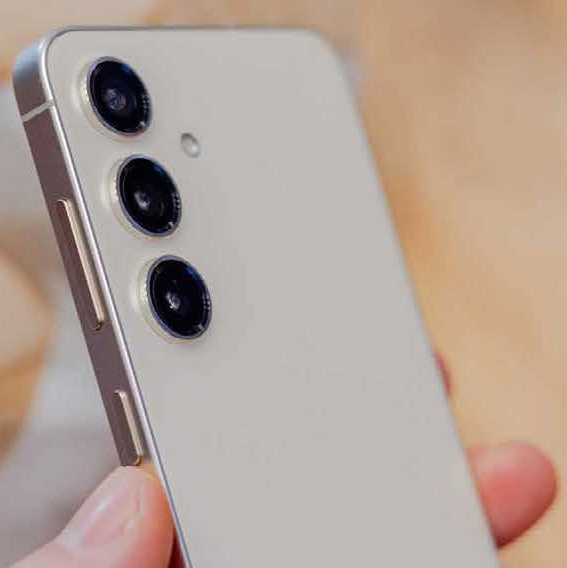
That said, the 3x optical zoom from the telephoto is very useful to have, and it’s also capable of some excellent results. It works nicely for portraits, allowing you to capture close-up macro shots with an impressively short minimum focusing distance.
The ultrawide is decent in the daytime, but it definitely struggles in the dark, though activating night mode can help a lot. Its biggest weakness is that it doesn’t have autofocus, so while it’s great for capturing landscapes, architecture and large groups of people, you can’t get very close with it, which limits its usefulness.
The selfie camera has the same specifications as the other phones in the S24 line-up, and it’s pretty excellent. It has autofocus, which is still a rarity on even the priciest flagship phones, and that means your selfies always look super sharp, no matter how far you are from the lens. An excellent portrait mode and a plethora of beautification effects add to the allure.
The S24 can shoot video at up to 8K 30fps, but given the small storage capacity, you won’t be doing so for very long. Instead, you’re more likely to shoot at 4K 60fps, which is supported on every camera. Stabilization is great in video mode, and solid microphones with good wind-noise suppression make for some great clips.
My personal favourite feature is 4K 120fps slow motion recording. Most phones still limit you to 1080p in slow motion, and these videos look excellent by comparison, with
considerably more detail.
Arguably the most exciting aspect of the S24’s camera system isn’t anything to do with the hardware, but rather the new AI-powered editing tools. You can now erase unwanted objects and people from the frame, remove reflections from windows, and straighten out images
without cropping in – as generative AI files in the corners.
The AI features extend to video, too. You can long press on any video as it plays back to convert it to slow motion, regardless of the original frame rate.
These effects are a little hit-and-miss in my experience, though. When they work well, it feels a bit like magic, but more often than not there will be unusual artefacts left behind.
Photographers with an eye for detail are unlikely to be satisfied at present. That said, it’s early days and the results are only going to get better, which is an exciting prospect.
BATTERY LIFE
With a 4,000mAh battery capacity, the Samsung Galaxy S24 has one of the smallest batteries of any modern flagship. I was a little nervous about this, but I needn’t have been, as it was plenty to see me through an average day’s use. I guess the lower-resolution LTPO display helps a lot in this regard.
Of course, if you’re gaming for hours or taking lots of photos, you can expect a shorter battery life, but that’s true of any phone. Even on heavy-use days, the phone soldiered on into the late evening, at which point I could just stick it on the charger without issue.
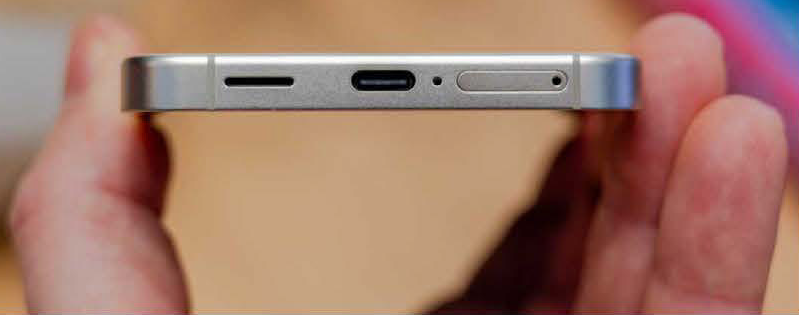
Like all Samsung flagships, there’s no charger included in the box, just a USB-C cable, and the charging speeds are far from impressive.
A 50 percent charge from fully flat will take just under half an hour, which isn’t awful, but it all depends on what you’re used to. After testing multiple flagships from Chinese manufacturers with 100-watt+ charging speeds, 25 watts feels glacial.
The phone supports wireless charging, too, but that’ll take even longer. Still, it’s nice to just be able to pop the phone onto a charging pad while you’re at your desk and let it do its thing.
SOFTWARE
Samsung’s One UI 6 software (over Android 14) is absolutely loaded with features, more so than ever now that all of that Galaxy AI goodness is baked in, but that’s both a good and bad thing. It means this phone can do all sorts of clever things – everything that the S24 Ultra can do, in fact – but finding everything can be a little difficult.
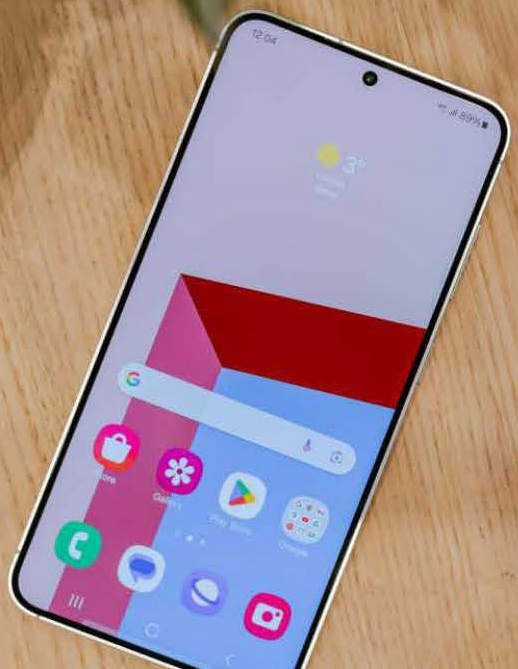
Still, once you learn your way around, there’s some great stuff here. I particularly love the stackable widgets on the home screen, and the addition of lock screen widgets is a nice feature that’s still very rare among Android flagships.
In general, One UI just feels snappier and more responsive than a lot of competing Android skins, too. I’m not sure if it’s a trick of the animation style, but whatever Samsung is doing here
works well.
As for the headline-grabbing AI features, they’re pretty cool, and they seem to work well, but they’re not things that I often need in my daily life. A lot of it is focused on translation, and as far as I can tell it works, but unless I’m travelling, it’s not something that comes into play. The ability to use AI to format your notes is neat, too, but unless I’m sharing them with someone, I don’t really mind my notes being messy.
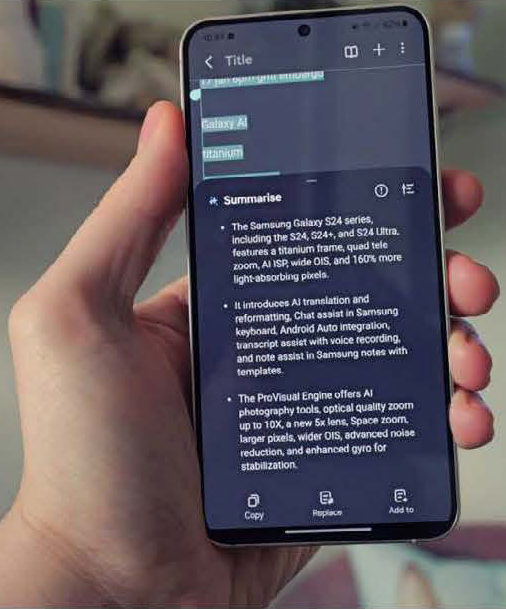
The feature I find myself using a lot is Circle to Search with Google. This debuted with the S24 series, but it has already made its way to Pixel devices, and I’m willing to bet it’ll be on other Android handsets before long.
Either way, it’s on the S24, and it’s an extremely convenient way to find more information about things you stumble across on the internet – just long press the home button (or swipe up from bottom of screen and hold) and circle what you want to search the web for.
Samsung also offers some of the longest software support of any brand, promising an astonishing 7 years of security patches and 7 generational OS upgrades on the S24 phones. This can only be matched by Google’s Pixel 8 series at the time of writing. So, if you plan on hanging on to your next phone for a long time, it’s an excellent option.
VERDICT
The Samsung Galaxy S24 isn’t the most exciting generational update – it’s just too similar to its predecessor, I can’t imagine many Galaxy S23 owners will want to upgrade.
That said, the improvements made here aren’t just for the sake of it. The matte finish looks and feels better than the glossy Galaxy S23 series, the screen is a definite improvement, and the Exynos processor trades blows with the best that Qualcomm has to offer.
Then, there are all the AI features. Some of these are undeniably useful, some come into play less often, and some are just plain fun. However, I didn’t find them to be impactful enough to be a deciding factor when choosing a phone. Maybe that’ll change as the software develops.
While I might crave some hardware upgrades, especially in the camera department, the fact remains that the Samsung Galaxy S24 is one of the best compact flagships available. If you prefer a smaller phone, it’s sure to satisfy with its ample power, impressive photography and premium design.
Competition is certainly heating up, though, with powerhouses like the Xiaomi 14 on the scene, so Samsung shouldn’t rest on its laurels for too long.
SPECIFICATIONS
- 6.2-inch (2,340×1,080; 416ppi) Dynamic LTPO AMOLED 2X, 120Hz, HDR10+ display
- Android 14, One UI 6.1
- Exynos 2400 (4nm) processor
- Octa-core (1x 3.39GHz Cortex-X4, 3x 3.1GHz Cortex-A720, 2x 2.9GHz Cortex-A720, 2x 2.2GHz Cortex-A520)
CPU - Xclipse 940 GPU
- 8GB/12GB RAM
- 128GB/256GB/512GB storage
- Three rear-facing cameras:
50Mp, f/1.8, 24mm (wide), 1/1.56-inch,
1.0μm, dual pixel PDAF, OIS;
10Mp, f/2.4, 67mm (telephoto), 1/3.94-inch,
1.0μm, PDAF, OIS, 3x optical zoom;
12Mp, f/2.2, 13mm, 120-degree
(ultrawide), 1/2.55-inch 1.4μm, Super
Steady video - Selfie camera: 12Mp, f/2.2, 26mm (wide), dual pixel PDAF
- Stereo speakers
- Wi-Fi 802.11 a/b/g/n/ac/6e, tri-band, Wi-Fi Direct
- Bluetooth 5.3, A2DP, LE
- NFC
- GPS, GLONASS, BDS, GALILEO, QZSS
- USB Type-C 3.2, DisplayPort 1.2, OTG
- Fingerprint scanner (under display, ultrasonic)
- Non-removable 4,000mAh lithium-ion battery
- 147×70.6×7.6mm
- 167g

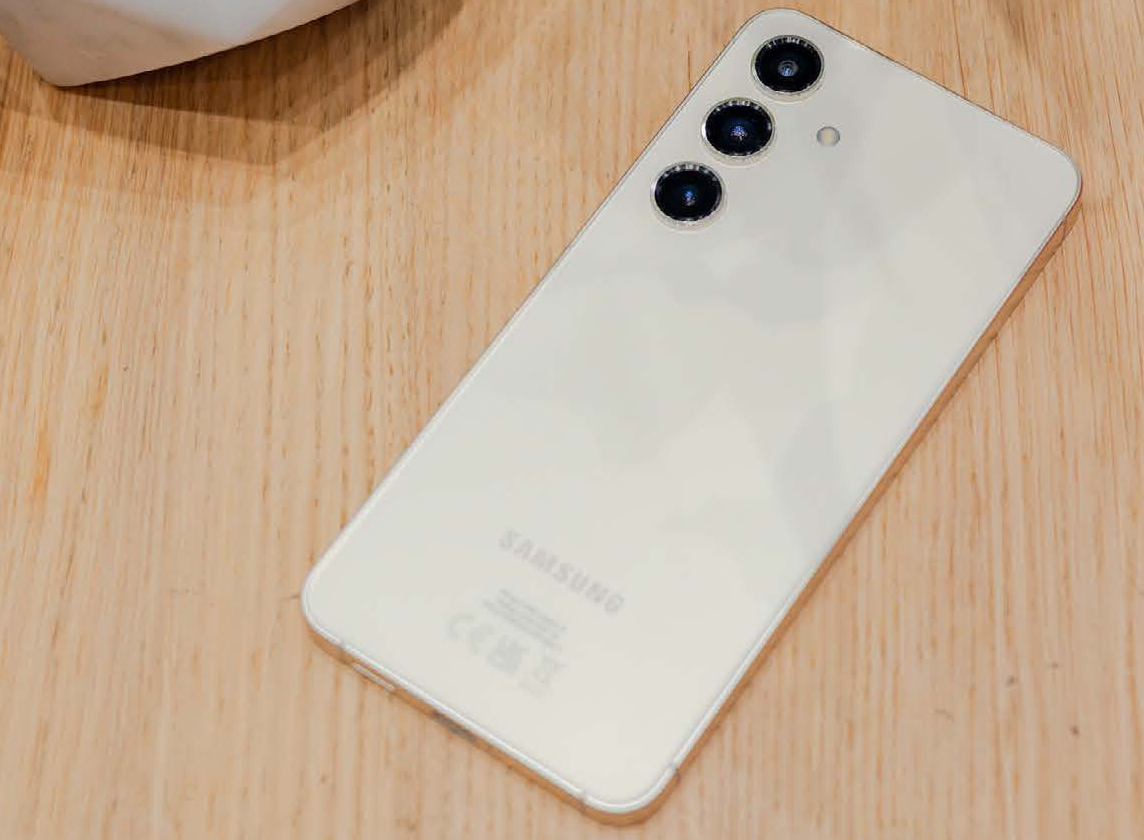


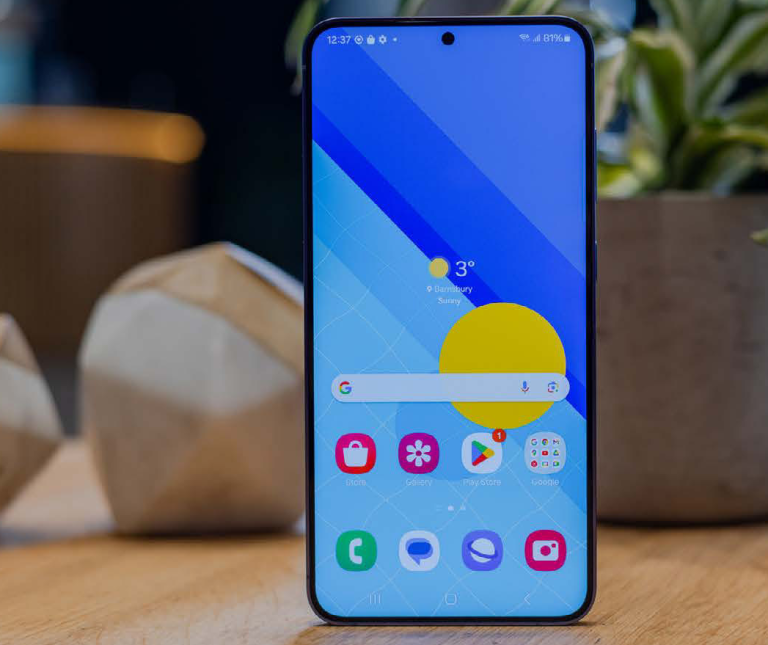

You must be logged in to post a comment.